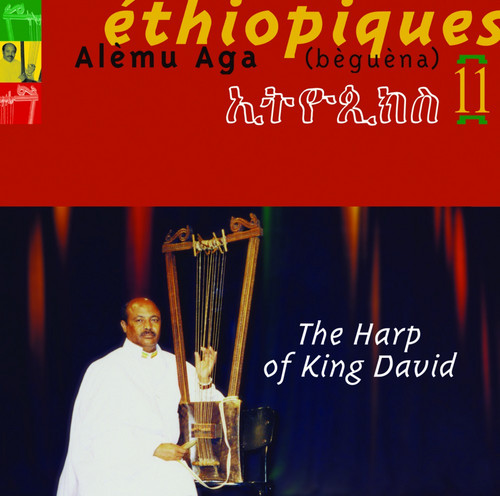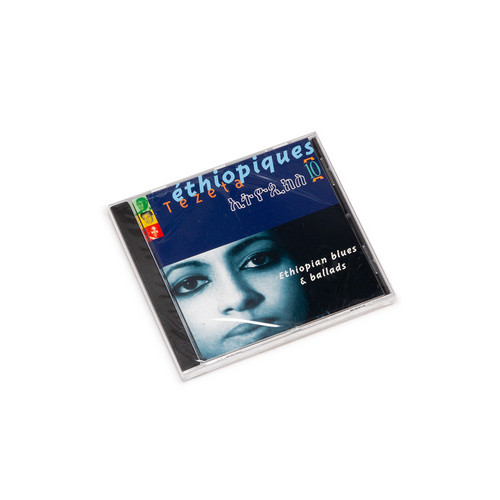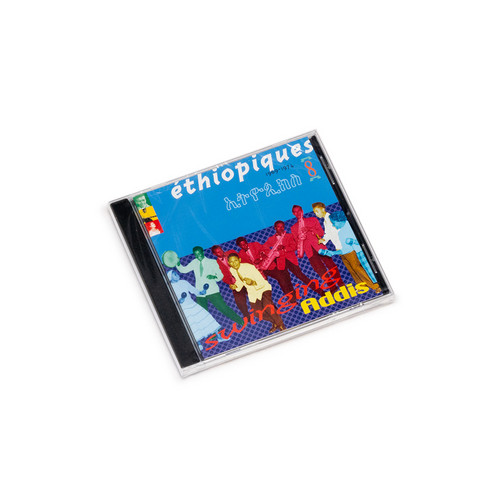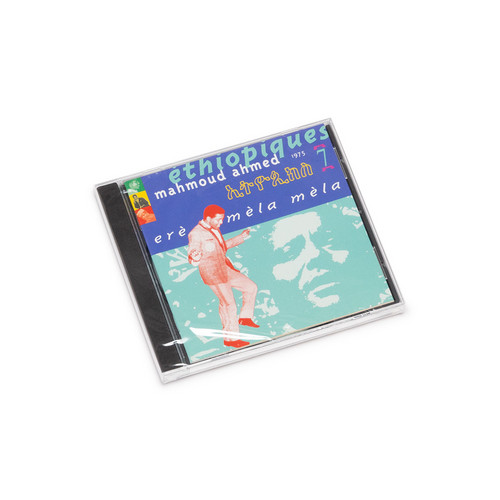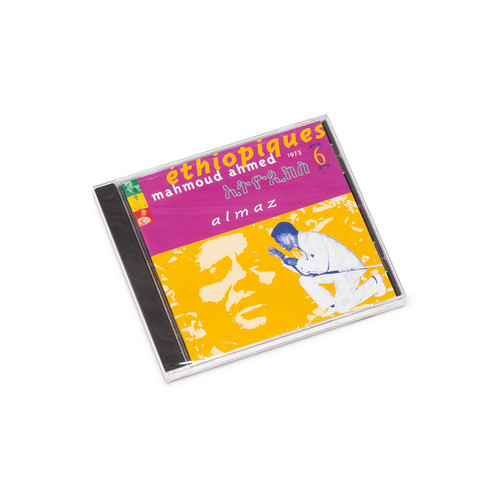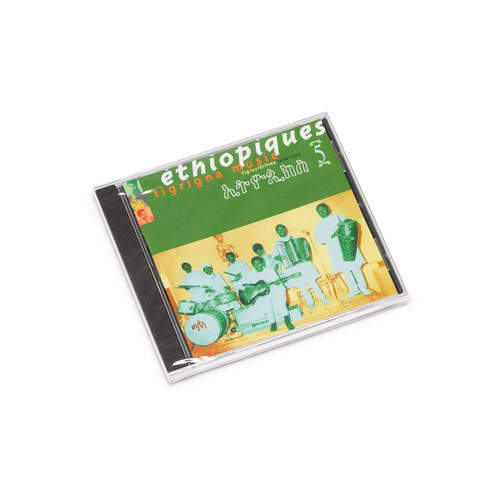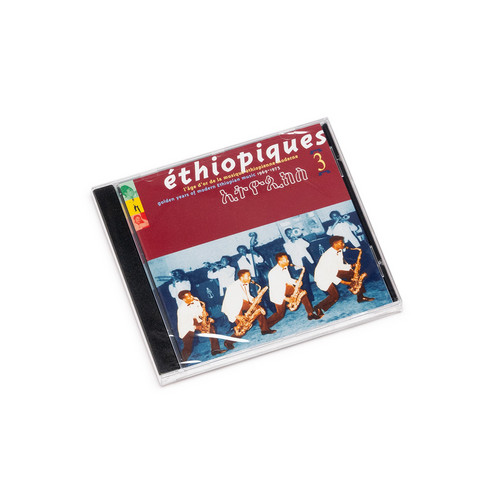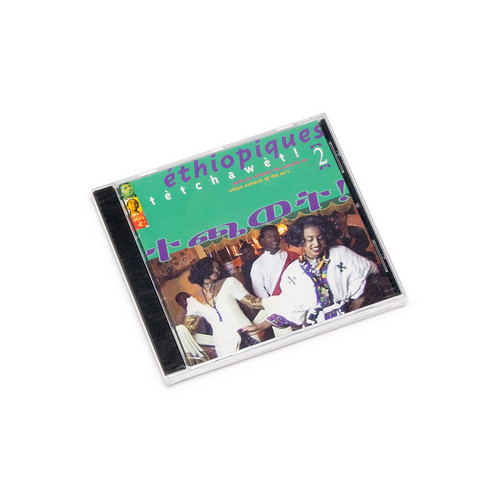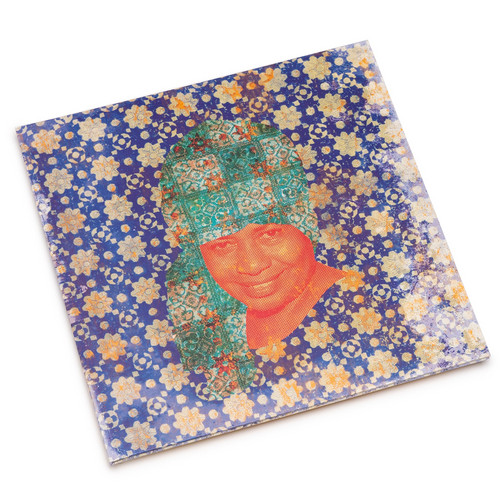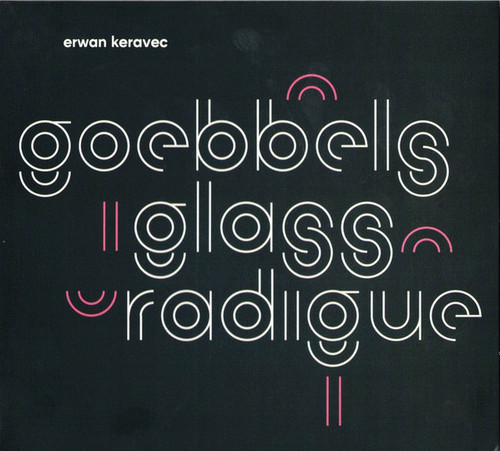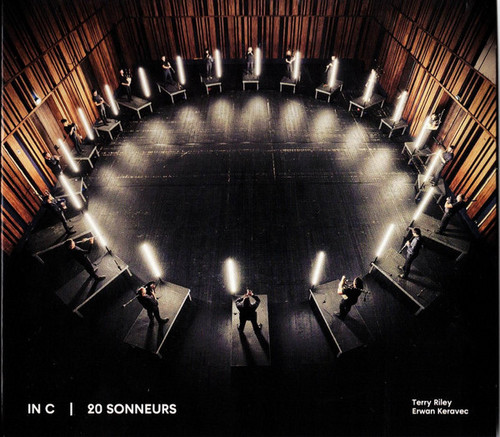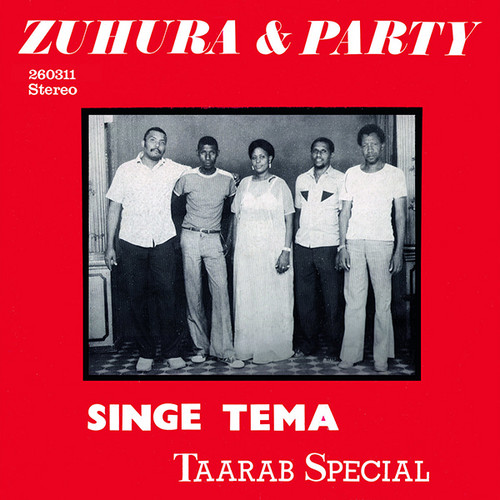★Buda Musique
Éthiopiques 11: The Harp Of King David
*2024 stock* Although commonly know as "King David's harp", the bèguèna is not actually a member of the harp family. It is in fact an oversized lyre with ten strings –usually plucked, sometimes strummed with a plectrum. It is probably the oldest musical instrument played in Ethiopia. One of today's uncontested masters of the bèguèna, Alèmu Aga, sings religious songs, traditional fables and folk tales, as well as his own poems. Meditative, devotional or uplifting sor some, simply "mind blowing" f…
Éthiopiques 10: Tezeta - Ethiopian Blues & Ballads
*2024 stock* Emptiness, melancholy, nostalgia; doom and gloom, morbid musings; heartache or homesickness: such is the stock in trade of the misery and mournful memories expressed by the song Tezeta - Ethiopia's majestic hymn to the blues. Etymologically, the word itself means memory, nostalgia, and several Ethiopian authors have used Tezeta as the title for their memoirs. For Ethiopians, it is the Tezeta genre that seems to capture the essence of the blues.
Éthiopiques 9 (1969-1974)
*2024 stock* The Alèmayèhu songs already presented in Ethiopiques 3 and 8 have given a foretaste of this outstanding stylist of Ethiopian pop, a singer as remarkable for his frenetic rock numbers as for his heartrending ballads. By dint of rampant Americanism, he earned himsef such nicknames as The Ethiopian James Brown or the Abyssinian Elvis. With his dazzling stage presence, nimble voicebox and wicked pompadour, he is a strutting show-off, straight out of American Graffiti or Saturday Night F…
Éthiopiques 8: Swinging Addis
*2024 stock* In the 1960s there was a Swinging Addis just as there was a Swinging London. In Ethiopia, as in Europe bor the USA, the first generation born after the war made their noisy, colourful breakthrough onto the scene. A veritable cultural revolution rather than a simple generational conflict. With music as its detonator and its common denominator. This volume aims to collect the clearest examples of soul, R'n'B and even twist in the recordings of the Ethiopian 'sixties'. The quintessence…
Éthiopiques 7: Erè Mèla Mèla
*2024 stock* Erè mèla mèla was the very first record of modern Ethiopian music released in Europe (Crammed Discs, Brussells, 1986). It is only logical that it should be reissued today, expanded and remastered, in the Ethiopiques series. This volum 7 of Ethiopiques includes all of the Mahmoud Ahmed's recordings released in 1975 by Kaifa Records, i.e. the LP KF 20 plus 2 tracks released on another 45 and two additional songs included in the first Crammed release, two masterpieces from an album rel…
Éthiopiques 6: Almaz
*2024 stock* For many years everything we knew about Mahmoud Ahmed (and Ethiopian music in general) was limited to the cult album Erè Mèla Mèla (Ethiopiques 7 CD 829802), recorded in 1975 but released for the first time in Europe in 1986. Mahmoud's first LP, Almas ("Almaz men eda nèw"), recorded two years before Erè Mèla Mèla, now bears new witness to the talent of one of the greatest Ethiopian artists of the past 35 years.
Éthiopiques 5: Tigrigna Music (Tigra / Eritrea 1970-1975)
*2024 stock* "Tigrigna music" refers to music of Tigray and Eritrea. The majorities in each of these territories share the same language, Tigrigna. Tigrigna music, dominant in Tigray and Eritrea, is quite distinct, both rhythmically and melodically, from 'Ethiopian' music, though both share the pentatonic scale. However, the instrument and traditional musical practices are similar, while their names may vary. Aside from the Tigrean Bèzuayènè Zègèyè, most of the artists featured on this album are…
Éthiopiques 4: Ethio Jazz & Musique Instrumentale 1969-1974)
*2024 stock* In the Ethiopian musical world, Mulatu Astatqé is a typical, totaly unique personality, a legend unto himself. For 30 years, he has been an inescapabe presence, a virtual statue casting a long shadow over the Ethiopian scene. His true singularity resides in his efforts in instrumental music in a country where musical culture and tradition are strangers to it. Note: Jim Jarmush put some of these hypnotic instrumentals to great use in the soundtrack of his film Broken Flowers
Éthiopiques 3: Golden Years Of Modern Ethiopian Music 1969-1975
*2024 stock* The Amha Records label issued approx 250 tracks in six years (1969-1975). 8 songs on this "Ethiopiques 3" CD are accompanied by bands affiliated with the Police. Indeed, until the very end of the 1960s, Ethiopia had no independant modern bands. Musical life was wholly dominated by the institutional bands attachd to either the Imperial Body Guard, the Police, the Army, the ciry of Addis Ababa, Agher Feqer Mahber or the Hayle Sellasie Theatre. Each of these institutions developed seve…
Éthiopiques 2: Tetchawet!
*2024 stock* Originally wandering minstrels, sharp-tongued peddlers who roamed the old Abyssinian countryside, many azmaris more or less settled down after the founding of Addis-Ababa just over a century ago. The cleverest of them quickly understood that they should set up their own businesses and take a cut on the drinks, instead of getting by on tips earned singing their way from one bar and tedjbèt (taverns serving tedj, the local mead) to another. (…) They have taken over the city by giving …
Éthiopiques 1 - Golden Years Of Modern Ethiopian Music 1969-1975
*2024 stock* 1969-1978. The main body of Ethiopian records was produced in less than one decade: all in all, just under 500 45s and around 30 LP albums. Amha Eshèté, creator of the Amha Records Label, was the driving force behind this brief creative burst and one of the main founders of the modernist movement, which swept the Ethiopian scene during the end of the rule of the Emperor Haile Sellassie. In six years (1969-1975), Amha issued approx 250 tracks. From his first recordings, he dispayed a…
Zanzibara
*2024 stock* Taarab is a genre of music popular in Tanzania and Kenya. It is influenced by the musical traditions of the African Great Lakes, North Africa, the Middle East and the Indian subcontinent. In the 1970s, a new taarab emerged in the coastal towns of Mombasa and Tanga: in Mombasa, Matano Juma's Morning Star replaced strings with distorted organ sounds, amplified violin or clarinet; and Zuhura Swaleh made the electrified tashkota the dominant instrument in his orchestra, while drawing in…
Qawwali, The Essence Of Desire
Big Tip! *2024 stock* Qawwali is a syncretic musical form of heterodox Islam (the unorthodox doctrines of the Sufis, a group of ascetics and mystics) in South Asia. Derived from the Arabic Qaul (to say, creed, word), the term designates both an Indian and Pakistani musical genre and its manifestation. A religious song designed to convey the message of Sufi poetry, Qawwali is performed by an ensemble of professional male musicians (the Qawwal) ranging from 3 to 13 people.
Waa Dardaaran
*2024 stock* Sahra Halgan is an iconic artist from Somaliland, an independent country since 1991 but not recognized by the international community, formerly a British protectorate in northern Somalia. The granddaughter of a singer and poet, she devoted herself to singing and music in her teens, defying tribal and family conventions.
It was in the context of the war against the dictator Siad Barre's terrible repression in the 80s that Sahra earned her nickname "Halgan", the fighter, and her songs…
Goebbels/Glass/Radigue
*2024 stock* Erwan Keravec's 4th opus devoted to contemporary music, Goebbels/Glass/Radigue features a trio of contemporary music maestros. Evocative, minimal or sensitive, 3 very different ways of imagining music. Heiner Goebbels places the bagpipes in the mountains, then abruptly in an industrial landscape, all the while quoting Bach, while Philip Glass' music uses the repetition of 5 notes served by continuous breathing. Finally, Eliane Radigue brings the instrument closer to intimacy.
8 Sonneurs pour Philip Glass
"My reasons for writing pieces are often very surprising.... Two Pages, you'll recall, is a unison. Someone asked me if I was trying to follow the evolution of music history and if, then, my next piece would follow that logic and be fifths. So I wrote Music In Fifths. All movement is parallel, so I had to do one with contrary motion. After Music In Contrary Motion came its opposite, Music In Similar Motion. It was all very simple. In 1969, nobody knew me or really cared what I could write, so I …
In C | 20 Sonneurs
*2024 stock* It's quite unusual for me to take on an existing piece. Since I've been interested in contemporary music, I've devoted myself to commissioning new pieces. This time, it's a bit different. I wanted to extend the ringers' quartet into a form reminiscent of a bagad. In C (1964) consists of 53 ordered patterns. The musicians repeat them freely and move on to the next. Terry Riley simply explains that each musician must be neither too far behind nor too far ahead of the others. This grea…
Singe Tema
The return of the Zanzibara series: a Deep Taarab masterpiece from legendary singer Zuhura Swaleh, recorded in Nairobi in 1981.
Zuhura Swaleh & Party rose to fame on the Mombasa scene in the 1970s
with a new fast-paced taarab style based on local ngoma rhythms and its
melodies. The group sound was lead by an electrically amplified
tashkota (actually a Japanese instrument correctly spelled as
taishokoto), its shape best rendered as being a kind of “typewriter
banjo”—a trio of strings shorted…
